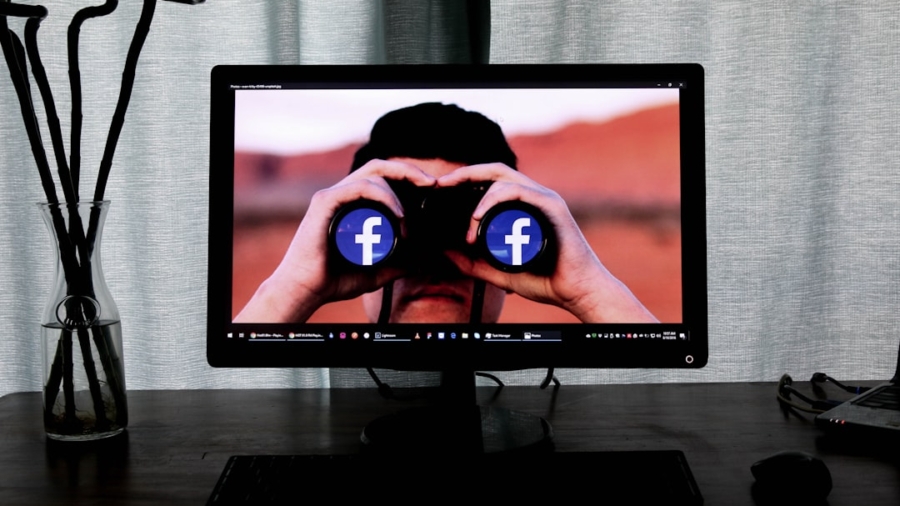The Internet of Things (IoT) has emerged as a transformative force in the digital landscape, connecting a myriad of devices—from smart home appliances to wearable technology—into a cohesive network that enhances convenience and efficiency. As these devices proliferate, they collect vast amounts of data, often including sensitive personal information. This data collection raises significant privacy concerns, as users may not fully understand the extent to which their information is being gathered, stored, and utilized.
The seamless integration of IoT devices into daily life has created a paradox where the benefits of connectivity are often overshadowed by the potential risks to individual privacy. The rapid adoption of IoT technology has outpaced the development of robust privacy frameworks, leaving consumers vulnerable to data breaches and unauthorized surveillance. As devices become increasingly interconnected, the potential for data leaks and misuse escalates.
This situation necessitates a critical examination of how IoT devices impact privacy and what measures can be taken to safeguard personal information in an era where everything from refrigerators to fitness trackers is capable of transmitting data. Understanding these dynamics is essential for consumers, policymakers, and technologists alike as they navigate the complexities of privacy in a connected world.
Key Takeaways
- IoT devices collect and transmit personal data, raising concerns about privacy and security.
- The impact of IoT devices on privacy includes unauthorized access to personal information and potential surveillance.
- Current privacy regulations are struggling to keep up with the rapid advancements in IoT technology.
- Potential risks of IoT devices on privacy include data breaches, identity theft, and invasive tracking.
- Big data and privacy in the IoT era are interconnected, as the massive amount of data collected by IoT devices poses significant privacy challenges.
The Impact of IoT Devices on Privacy
The impact of IoT devices on privacy is multifaceted, encompassing both the nature of data collected and the methods by which it is processed. Many IoT devices are designed to operate continuously, gathering real-time data that can reveal intimate details about users’ lives. For instance, smart home devices such as thermostats and security cameras monitor household activities, while wearables track health metrics like heart rate and sleep patterns.
This constant stream of data can create comprehensive profiles of individuals, which can be exploited for targeted advertising or even more nefarious purposes. Moreover, the interconnected nature of IoT devices amplifies privacy risks. A single compromised device can serve as a gateway for hackers to access an entire network.
For example, if a smart thermostat is hacked, it could potentially allow unauthorized access to other connected devices within the home, such as security systems or personal computers. This interconnected vulnerability underscores the importance of robust security measures and highlights the need for consumers to be vigilant about the devices they choose to integrate into their lives.
Current Privacy Regulations and IoT Devices

As the proliferation of IoT devices continues to raise privacy concerns, various regulatory frameworks have emerged to address these issues. In the United States, there is currently no comprehensive federal law specifically governing IoT privacy; however, existing regulations such as the Health Insurance Portability and Accountability Act (HIPAA) and the Children’s Online Privacy Protection Act (COPPA) provide some level of protection for specific types of data. Additionally, state-level initiatives like the California Consumer Privacy Act (CCPA) have begun to set standards for how companies must handle personal information.
In Europe, the General Data Protection Regulation (GDPR) represents a more robust approach to data privacy, imposing strict requirements on organizations that collect and process personal data. Under GDPR, individuals have greater control over their data, including rights to access, rectify, and erase their information. While these regulations are a step in the right direction, they often struggle to keep pace with the rapid evolution of technology.
The challenge lies in creating adaptable frameworks that can effectively govern the unique characteristics of IoT devices while ensuring that consumer privacy is prioritized.
The Potential Risks of IoT Devices on Privacy
The potential risks associated with IoT devices extend beyond mere data collection; they encompass issues related to data security, user consent, and the ethical use of information. One significant risk is the lack of transparency regarding how data is collected and used by manufacturers. Many consumers may unwittingly agree to extensive data-sharing agreements without fully understanding the implications.
This lack of informed consent can lead to situations where personal information is sold or shared with third parties without users’ knowledge. Additionally, the security vulnerabilities inherent in many IoT devices pose a substantial threat to privacy. Many manufacturers prioritize functionality over security during the design process, resulting in devices that are susceptible to hacking and exploitation.
For instance, poorly secured smart cameras have been known to be hijacked by cybercriminals who use them for surveillance or even extortion. The consequences of such breaches can be devastating, leading not only to financial loss but also to significant emotional distress for affected individuals.
The Role of Big Data and Privacy in the IoT Era
In the age of IoT, big data plays a pivotal role in shaping how information is collected, analyzed, and utilized. The vast amounts of data generated by IoT devices provide organizations with unprecedented insights into consumer behavior and preferences. This capability can drive innovation and improve services; however, it also raises critical questions about privacy and ethical data use.
Companies often aggregate data from multiple sources to create detailed consumer profiles that can be used for targeted marketing or predictive analytics. The challenge lies in balancing the benefits of big data with the need for privacy protection. As organizations leverage this wealth of information, they must implement stringent data governance practices to ensure that personal information is handled responsibly.
This includes anonymizing data where possible, obtaining explicit consent from users before collecting sensitive information, and being transparent about how data will be used. Failure to do so not only jeopardizes consumer trust but also exposes organizations to legal repercussions under existing privacy regulations.
Mitigating Privacy Concerns in a World Dominated by IoT Devices

To mitigate privacy concerns associated with IoT devices, several strategies can be employed by consumers, manufacturers, and policymakers alike. For consumers, being proactive about device selection is crucial. Researching products before purchase—understanding their data collection practices and security features—can empower users to make informed decisions about which devices to integrate into their lives.
Additionally, regularly updating device firmware and utilizing strong passwords can help protect against unauthorized access. Manufacturers also bear a significant responsibility in safeguarding user privacy. By prioritizing security during the design phase and implementing robust encryption protocols, companies can reduce vulnerabilities in their devices.
Furthermore, adopting transparent data practices—such as clearly communicating what data is collected and how it will be used—can foster trust between consumers and manufacturers. Policymakers must also play a role by developing comprehensive regulations that address the unique challenges posed by IoT technology while promoting innovation.
The Future of Privacy in the Age of IoT Devices
As we look toward the future, the landscape of privacy in relation to IoT devices will likely continue to evolve in response to technological advancements and societal expectations.
For instance, AI algorithms that analyze user behavior could lead to more personalized experiences; however, they may also raise concerns about surveillance and manipulation.
The future will likely see an increased emphasis on privacy by design—a principle that advocates for integrating privacy considerations into the development process from the outset rather than as an afterthought. This approach could lead to more secure devices that respect user privacy while still delivering valuable functionality. Additionally, as public awareness of privacy issues grows, consumers may demand greater accountability from companies regarding their data practices, prompting a shift toward more ethical standards in technology development.
Navigating Privacy in a Connected World
Navigating privacy in a world dominated by IoT devices requires a concerted effort from all stakeholders involved—consumers must educate themselves about their digital footprint; manufacturers must prioritize security and transparency; and policymakers must create adaptive regulations that protect individual rights while fostering innovation. As technology continues to advance at an unprecedented pace, striking this balance will be essential for ensuring that the benefits of connectivity do not come at the expense of personal privacy. In this interconnected age, fostering a culture of respect for privacy will be paramount in building trust between consumers and technology providers while enabling a future where innovation thrives alongside individual rights.
In the rapidly evolving landscape of the Internet of Things (IoT), privacy concerns are becoming increasingly significant as more devices become interconnected. The article “The Future of Privacy in a World Dominated by IoT Devices” delves into these challenges, exploring how data security and user privacy can be maintained amidst the proliferation of smart technology. A related discussion can be found in the article Tesla Refutes Elon Musk’s Timeline on Full Self-Driving, which touches on the implications of autonomous technology and the data privacy issues that arise as vehicles become more integrated with IoT systems.
FAQs
What is IoT and how does it relate to privacy?
IoT, or Internet of Things, refers to the network of physical devices, vehicles, home appliances, and other items embedded with sensors, software, and connectivity that enables them to connect and exchange data. IoT devices collect and transmit data, raising concerns about privacy and security.
How do IoT devices impact privacy?
IoT devices can impact privacy by collecting and transmitting personal data, such as location, behavior, and preferences. This data can be vulnerable to security breaches and unauthorized access, posing risks to individuals’ privacy.
What are the potential privacy risks associated with IoT devices?
Potential privacy risks associated with IoT devices include unauthorized access to personal data, data breaches, surveillance, and the potential for misuse of collected data by third parties.
What measures can be taken to protect privacy in a world dominated by IoT devices?
Measures to protect privacy in a world dominated by IoT devices include implementing strong encryption, ensuring secure authentication and access controls, regularly updating device software, and being mindful of the data collected and shared by IoT devices.
What are the current regulations and laws addressing privacy in relation to IoT devices?
Various regulations and laws, such as the General Data Protection Regulation (GDPR) in the European Union and the California Consumer Privacy Act (CCPA) in the United States, address privacy concerns related to IoT devices by imposing requirements for data protection and user consent.

